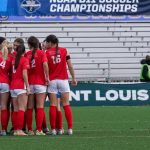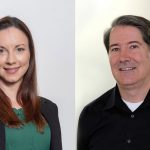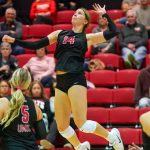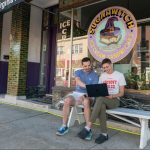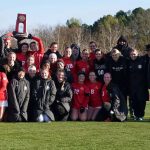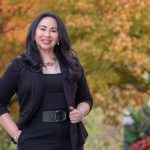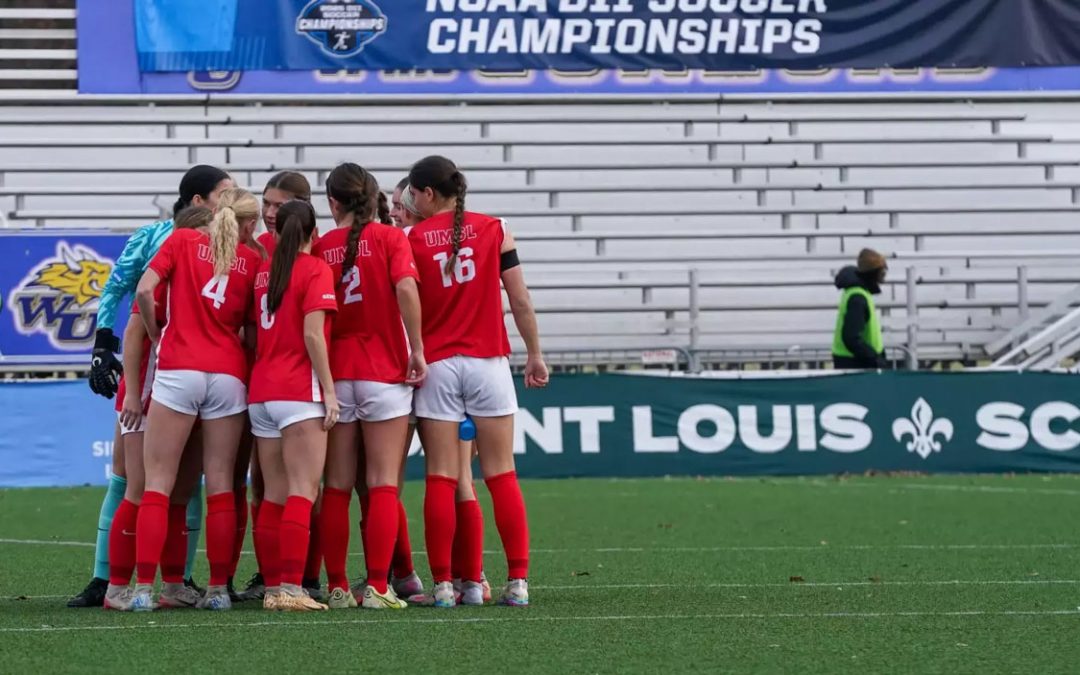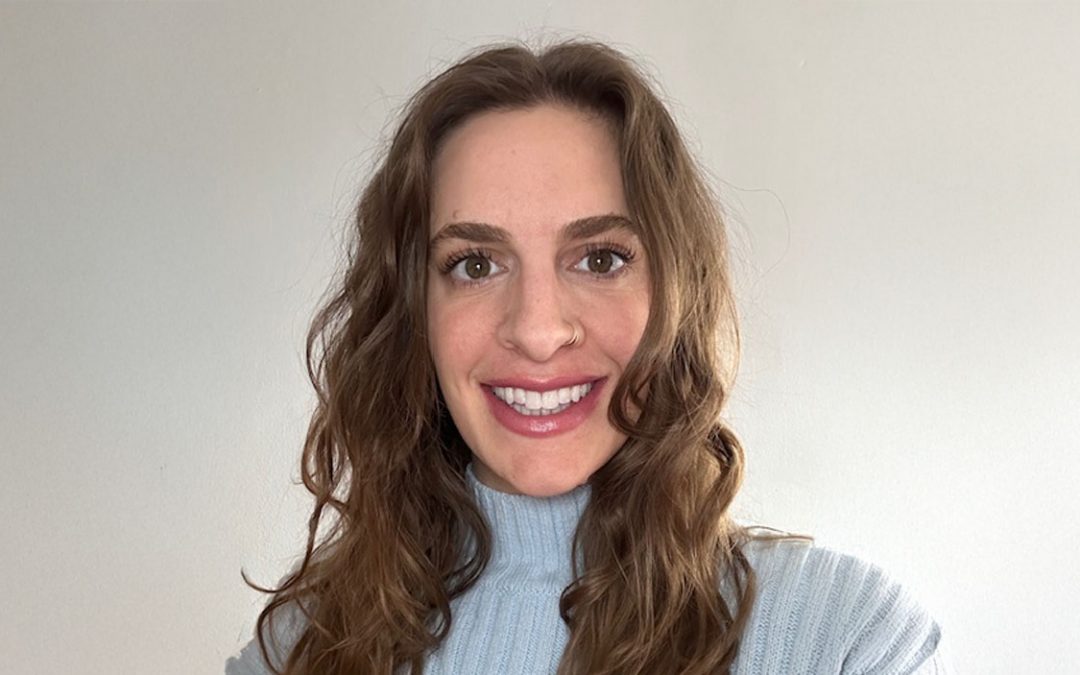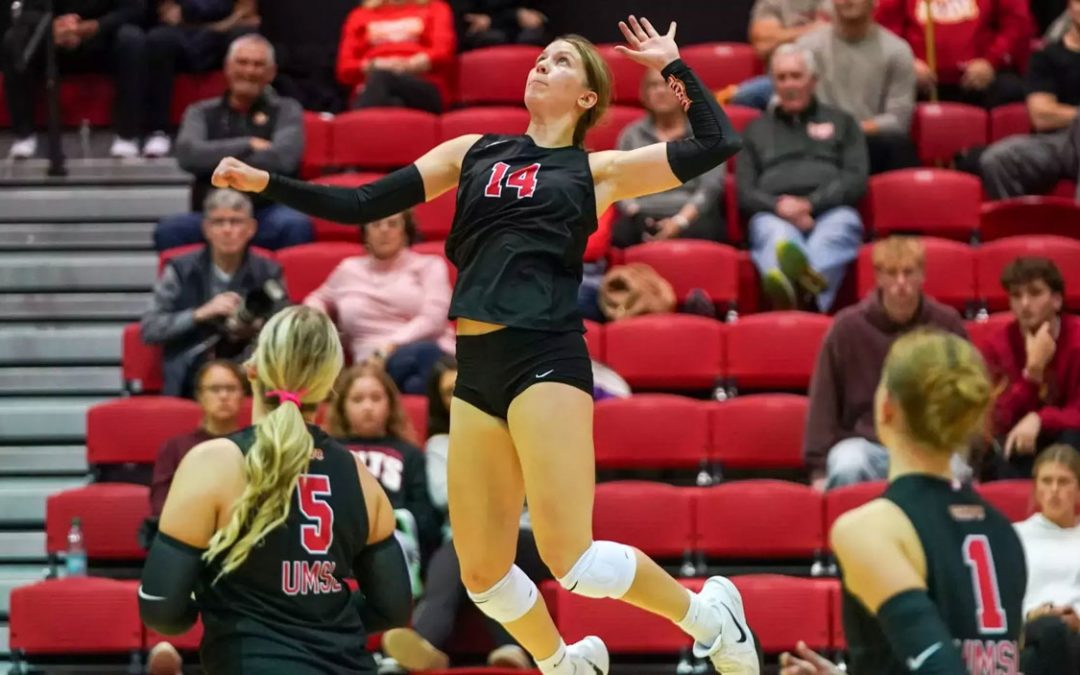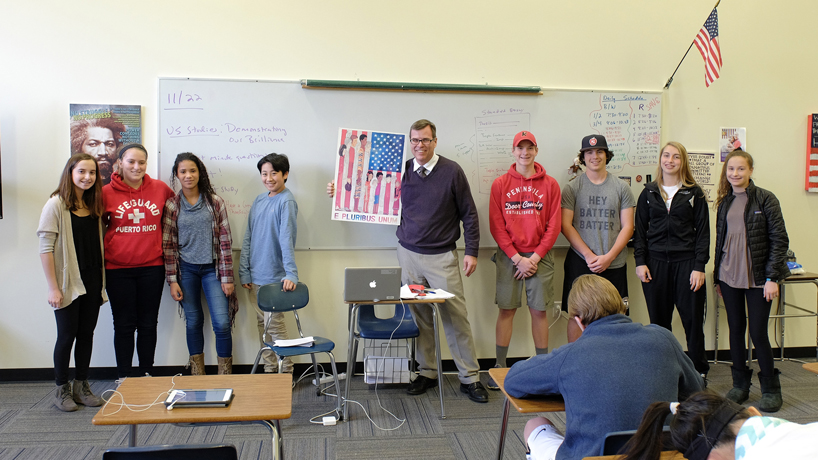
Rob Good displays the motto he uses as a gateway to exploration in his U.S. history survey courses. E Pluribus Unum translates to “out of many, one.” (Photo by August Jennewein)
“One of my core goals is to help students consider their roles as citizens,” Rob Good states in his 2013 paper “Using E Pluribus Unum as a Narrative Framework for the U.S. History Survey.”
“As a history teacher, my greatest desire is that I have provided my students with a foundation that will help them continue to interpret their nation’s past as they act to shape its future.”
Such steadfast dedication to his students’ sense of agency, as well as to finding common ground from which to explore the diverse and often conflicting aspects of history, has earned Good national attention on more than one occasion.
In 2012, the Ladue Horton Watkins High School teacher, who earned his PhD in education from the University of Missouri–St. Louis, was granted the Mary K. Bonsteel Tachau Teacher of the Year Award by the Organization of American Historians.
And just this past June, the Gilder Lehrman Institute of American History named him the 2016 Missouri History Teacher of the Year.
UMSL Daily recently caught up with Good to learn more about his nearly three-decade-long teaching career, his experience at UMSL and his passion for that Latin phrase that has shaped not only United States history but his approach to teaching it.
How long have you been in your current position at Ladue? Did you take a traditional path to teaching or always know you wanted to be a high school teacher?
I am in my 26th year of teaching at Ladue and my 27th year teaching high school. My path to teaching was somewhat circuitous. I was working on a PhD in history when I realized that I enjoyed teaching more than research (although I did like research). I decided to try teaching in a private school to determine if I really wanted to pursue a career in secondary education. After I earned my MA in history, I accepted a position at Missouri Military Academy in Mexico, Missouri. I truly loved my classroom experience there but realized I needed to obtain professional certification if I intended to remain in the field. I returned to St. Louis and obtained secondary certification at UMSL. I was placed at Ladue for student teaching and the rest, as they say, is history.
What drew you towards teaching history?
My father was a history teacher and textbook writer before he became an Episcopal priest, so we always talked about history as I was growing up. I have always loved history, particularly because it can help us try to make sense of the present. I always tell my students that history shapes how we act in the present. To prove this, I ask them if they have ever experienced a breakup with a partner. I then ask them if the stories they tell about the breakup shape their actions as they look for a new partner. I think history is the same. The various stories we tell about the past shape our multiple perspectives on the present and our aspirations for the future.
What would you say is the most challenging aspect of this subject? What is the best or most fun aspect?
The most challenging aspect of teaching history is helping students (and all people) to move outside of their current mindsets to consider why individuals in the past might have acted in a particular way. Context is critical, not to excuse or justify past actions, but to understand them. The fun comes when students get an “aha” moment, connecting to the past in some authentic and surprising way.
In 2013, you published an article which discusses your use of the motto from the Great Seal of the United States, E Pluribus Unum or “out of many, one,” as a framework for teaching your U.S. history survey courses. How has this approach made a difference in your classroom?
I think it has made a difference in several ways. First, as I mention in the article, it allows students to connect to the content from a number of different perspectives regardless of their political and personal beliefs, and it provides a context for them to discuss the past with each other. Also, it provides a structure for connecting the past with their current-day concerns. For instance, when we discuss debates about the proper role of government in the Progressive Era, they can see that reflected in our current political environment. When we examine the experiences of groups advocating for greater opportunity, liberty, equality or democracy in the past, we can see that reflected in our current social movements like LGBT rights or Black Lives Matter. I am always experimenting with new lessons with the framework of E Pluribus Unum.
Finally, you received your PhD from UMSL and continue to teach at the university in an adjunct capacity. Can you speak about your experience? Why did you personally choose UMSL?
I chose UMSL for my PhD because it is a land-grant, research university that had the capacity to support my research goals while also providing the flexibility of scheduling for a working professional. I truly appreciated my PhD experience. I was challenged by experienced and knowledgeable professors who took an interest in my work and were willing to question my underlying assumptions. My dissertation defense might have been the most fun I have ever had in an academic setting. The professors and fellow students in the room asked probing questions that let me fully explain my reasoning and research.
Is there anything else you’d like to share?
I think the only thing I would add is why I believe public education is so vital to our country. The public school remains one of the only institutions where most people can come and engage with a diverse group of people about the meaning of their culture and community. It remains our laboratory for democracy.



